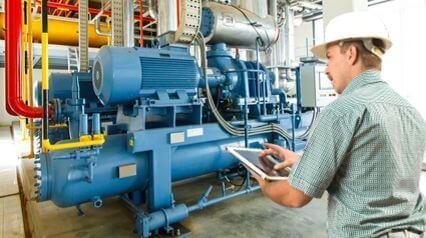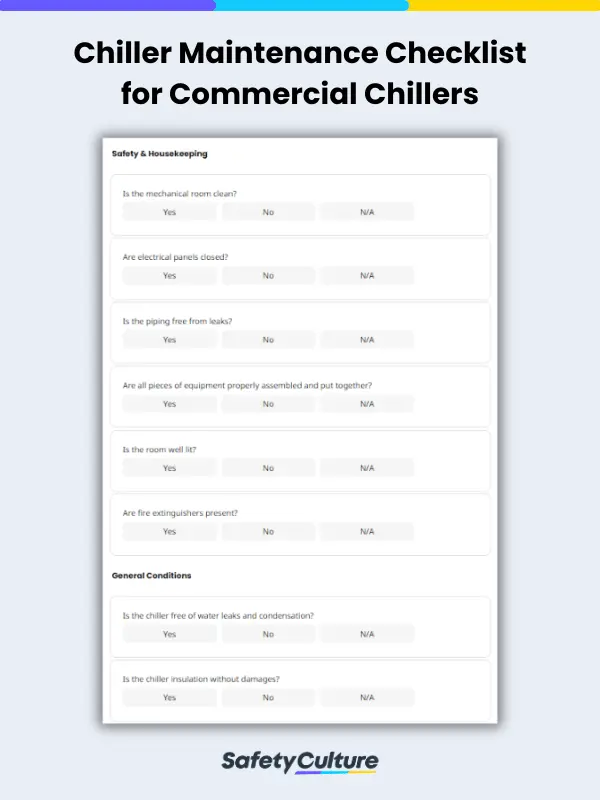What is Chiller Maintenance?
Chiller maintenance is the process of regularly inspecting commercial or industrial chillers to extend equipment life and maintain optimum efficiency. While chiller maintenance vary per type of chiller—reciprocating, centrifugal, screw, and scroll—preventive chiller maintenance should also be carried out. Maintaining the good working condition of air-cooled chillers and water-cooled chillers is crucial to prevent substandard output and avoid increased costs.
What is a Chiller Maintenance Checklist?
A chiller maintenance checklist is an assessment tool used by maintenance technicians to evaluate an industrial or commercial chiller’s working condition during scheduled inspections. It is also used by operators and maintenance personnel for daily temperature readings. A chiller maintenance checklist is an essential tool for coming up with preventive measures to avoid costly breakdowns.
Chiller Maintenance: 3 Often-missed Signs of Inefficiency
Even professional technicians and operators make the mistake of neglecting regular chiller inspections. It is essential that technicians diligently perform maintenance tasks so minor issues can be identified and resolved before they worsen. Here are the top 3 often-missed signs of chiller inefficiency:
High Approach Temperature
If the temperature difference between the supply water and return water is higher than intended, contaminants may have accumulated in the evaporator and condenser tubes.
Consider improving your current water treatment system or chemically treat chiller tubes when cleaning them. Since heat-transfer efficiency directly correlates with chiller efficiency, it is crucial to keep all tubes free from sludge, scale, and algae.
Gradual Pressure Increase
If condenser pressure steadily rises within the month, water flow rates may be incorrect which reduces the efficiency of the chiller. Calibrate the control system by periodically removing accumulated debris on internal parts with a high-velocity, low-pressure blower. Non-condensables, or trapped air and moisture, also increase condenser pressure and compressor power, resulting in more power consumption.
Limited Refrigeration/Cooling Load
If a chiller consistently fails to reach full refrigeration load, the oil may have migrated into the refrigerant which causes improper refrigerant levels.
Changes in oil characteristics may mean significant compressor wear. When the liquid refrigerant enters the compressor and evaporates, it leads to decreased cooling capacity, overloaded motor condition, and possible compressor impeller damage.
Global Companies Conduct Inspections With Us
See how a trusted food delivery business in Australia, Marley Spoon, immediately takes action based on real-time data using SafetyCulture temperature sensors:
SafetyCulture gives you the flexibility to power any inspection you require—onsite, underground, and across the globe. Inspect construction sites, restaurant food safety inspections, conduct temperature checks, pre-flight checks, toolbox talks, and more. It is the mobile forms inspection solution for all industries.



